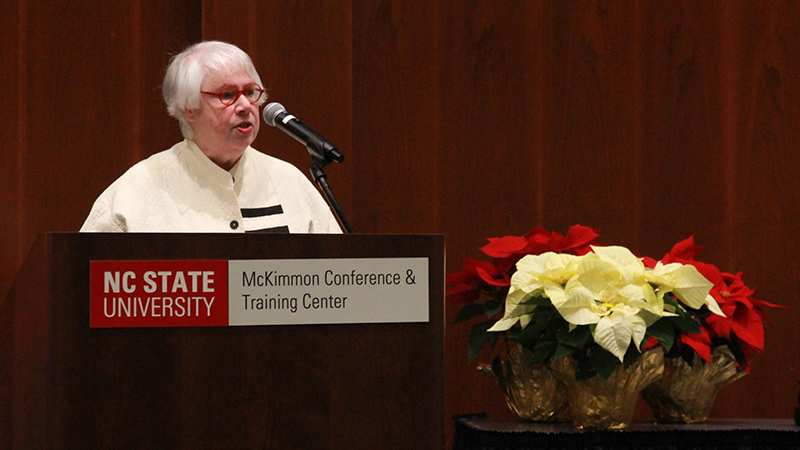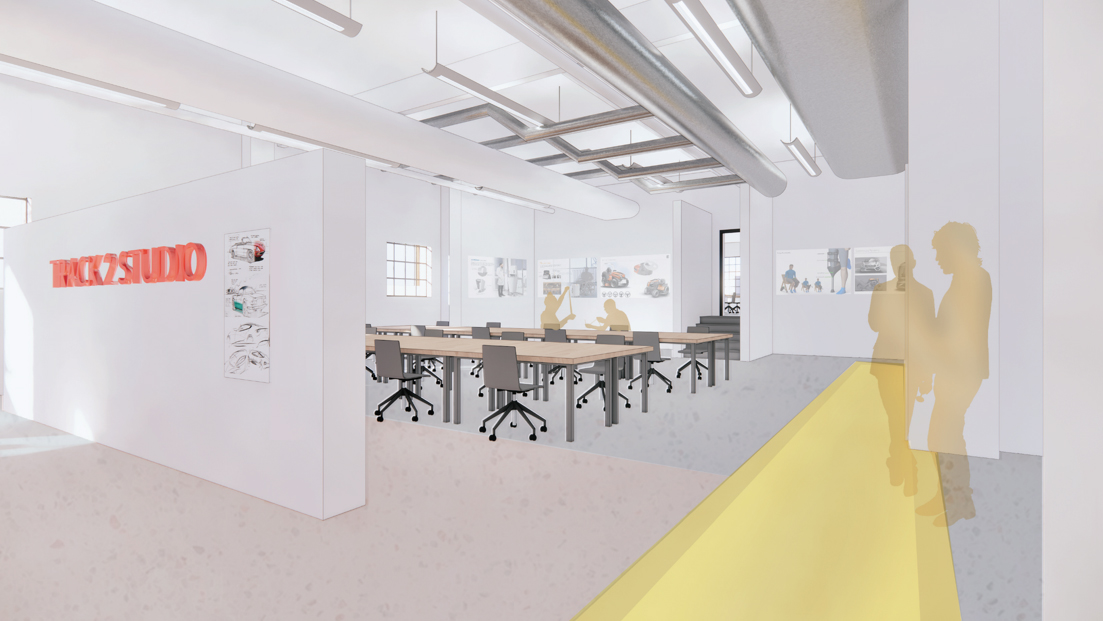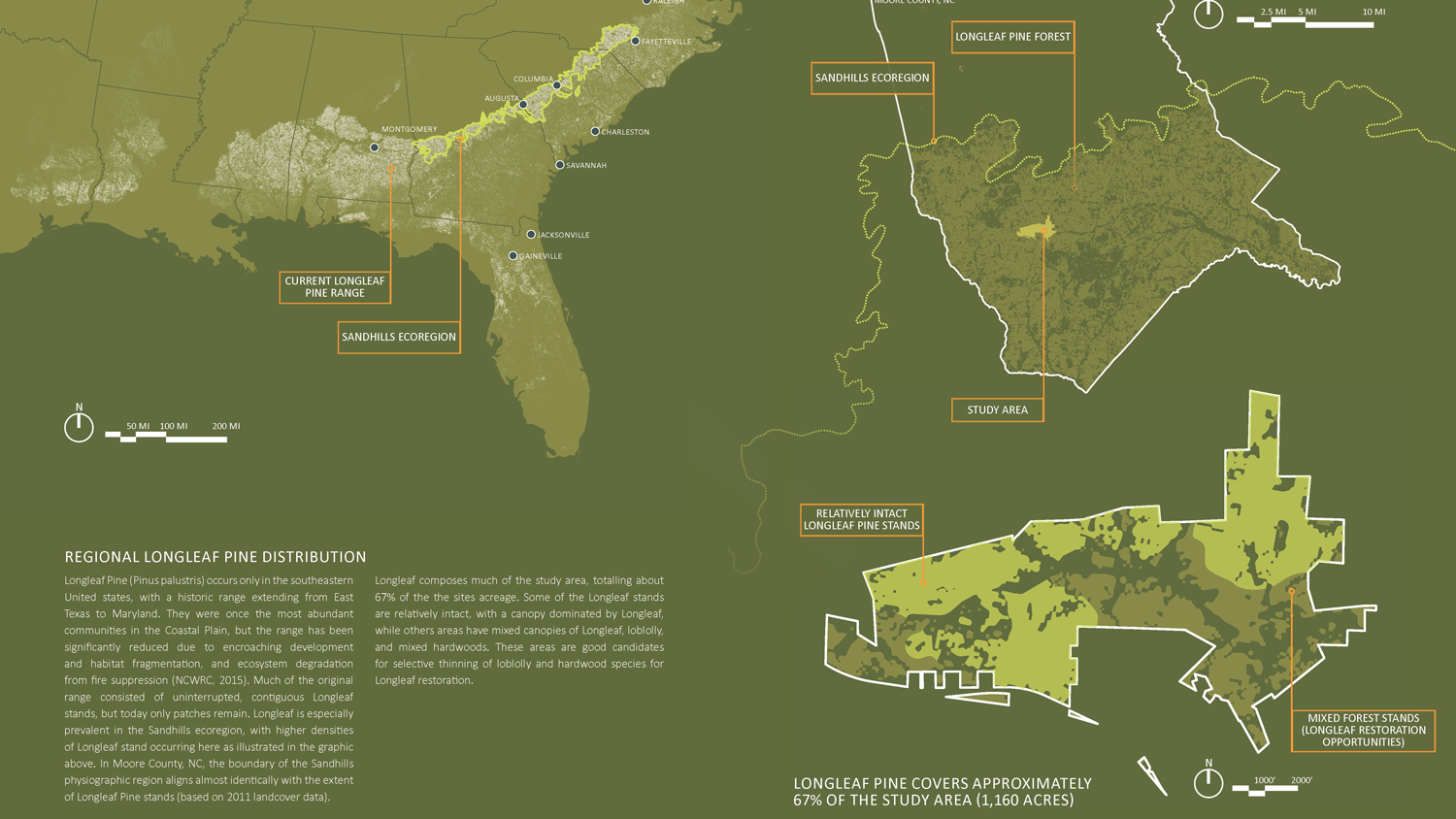Fall 2018 Commencement Address by Meredith Davis

Fifty years ago in a book titled The Structure of Scientific Revolutions, historian Thomas Kuhn described a phenomenon he called “normal science.” Kuhn observed that a field adopts theories and practices that are most successful in solving a few problems that a group of professionals recognize as being especially acute. The field extends this knowledge by further articulating a paradigm and expanding its conceptual territory through application. In design, for example, the British government asked the Royal College of Art to increase public awareness of design by defining its role in secondary education; a task for which researchers ultimately delivered a 1975 report titled, Design in General Education. This was the conceptual origin of “design thinking,” a term later promoted by design firm IDEO in marketing its professional services. The original concept was that design is neither art nor science, and that designers apply conjecture to uncertain problems, and use physical modeling and visualization as ways of thinking, planning, and doing.
We can now find design thinking extended to literature on business, education, and government policy. A google search for the term produces more than 1.2 billion entries. And in the hour, I spent writing this speech, I received two independent email queries for information on this topic.
Eventually the field codifies “normal science” in textbooks and college-level curricula that prepare the next generation of professionals and researchers. As College of Design students, today’s graduating seniors took a course titled “Design Thinking,” and after graduation they are likely to use the term in explaining the perspective they bring to interdisciplinary work. But this progressive adoption of a paradigm as core knowledge in a discipline creates the impression that fields advance through “normal science” — through the incremental accumulation, refinement, and broadening application of knowledge over time.
Kuhn cautioned against this view of disciplinary history. He said the aim of normal science is not to call forth new phenomena or theories, especially those that don’t fit the dominant paradigm. Instead, normal science relaxes the standards for evaluating work in instances under which the paradigm ceases to be effective. But eventually, anomalies build up, and there are calls for a new paradigm. The Chronicle of Higher Education and Harvard Business Review recently published articles challenging the claims of design thinking — and in particular, the work of the Stanford d.school — as falling short of measurable improvement in solving the complex social challenges it often purports to address. We see designers struggle in applying object-centered methods to systems-level problems, such as poverty, educational reform, resource depletion, and social justice. The traditional paradigm addressed twentieth-century design problems of function and appearance but is outmatched by a twenty-first century plethora of unstable constraints in constantly changing relationships. Unlike the design of a chair or a poster, interacting forces, not physical elements, define the nature of contemporary problems. We are no longer satisfied with design that is simply useful, usable, and desirable. Today’s design responses must be environmentally sustainable, technologically feasible, economically viable, and socially equitable.
Kuhn argued that disciplinary practice does not advance through the incremental accumulation and extension of knowledge in “normal science,” but instead, through paradigm shifts — through revolution, not evolution. The old paradigm, no matter how elaborated, no longer fits the circumstances, and revolutionary practitioners recognize potential in inconsistent results.
NC State has given you a foundation. I can tell you from having completed more than 100 curricular consultations at universities in ten countries, and twenty years of service in the accreditation of college programs, your foundation is among the best in the world. —Meredith Davis
For the last 18 months I have led a national initiative to describe forces shaping future practice and to develop strategies for the continuing education of design professionals. Informing this work are 10-year employment projections from the US Bureau of Labor Statistics and surveys from more than 12,000 practicing professionals, many of whom worry about remaining relevant across their careers. What is clear in these data is outsized growth in emerging design practices — double and triple times national averages for traditional design work. These new design opportunities call for a paradigm shift. The seniors graduating today will still be practicing in 2065. As faculty, master’s and doctoral graduates will shape designers who will still be working in the next century. When many of you were born, Kodak was still making film, google had just registered its domain name, Wikipedia didn’t exist, and the only things amazon sold were books. Wired Magazine reports that 90% of all the data produced in human history were created in the last two years, 2.5 quintillion bytes of information every day. One hundred years ago most Americans lived in rural areas; today, 80% of the US population lives in cities. The volume and velocity of change is unparalleled in human history. And the implications for design are not just in how change redefines what we make, but the scale at which those things reconfigure the human experience.
NC State has given you a foundation. I can tell you from having completed more than 100 curricular consultations at universities in ten countries, and twenty years of service in the accreditation of college programs, your foundation is among the best in the world. You are well prepared in the normal science of design. But you’re not finished. The next step is to consider the anomalies — to critically evaluate the perceived success of established paradigms that underpin your practice. Pay as much attention to the assumptions that guide your decisions over the coming decades as you do to satisfying the day-to-day requests of your clients. For those of you who will teach future generations of designers, continuously interrogate what you teach and stay informed about the dynamic forces shaping the context in which your students will work, including those that appear to fall outside of the obvious the domain of design. And doctoral students, you are already in the vanguard of a paradigm shift that acknowledges the importance of research as an activity that distinguishes a profession from a trade. Choose your research topics wisely in work that is grounded in problems of consequence, and tell convincing stories about your findings.
I congratulate you on your accomplishments. NC State is rightfully proud of you.
My wish for all of you on this important first day as new professionals is that you go forth as revolutionaries.
Thank you!
- Categories:


